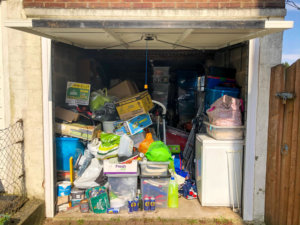Whether you’re moving across the country, across town, or the street, moving tends to bring a lot of stress and overwhelm for most people. Surveys show moving is one of the most stressful events in a person’s life.
That’s not purely related to the tasks at hand. You can start out flowing smoothly and hit stressful points at any stage of the move. Thankfully, we’ve collected some crucial mistakes to avoid so you can find yourself on the right side of move statistics. Is it possible to enjoy moving? Trust us, there’s a chance!
1. Procrastinating
Don’t fall for the procrastination trap. If it weren’t so easy to be tempted, we wouldn’t have to make this the number one tip. In fact, by avoiding procrastination you’ll find it easier to prepare for – and enjoy – a stress-free move.
Waiting until the last minute brings stress and worry and leaves you rushing around to throw things together. That means things end up forgotten or you feel frantic during your move. Procrastinating is a surefire way to ensure you arrive in your new place completely exhausted.
In an ideal world, you’ll start your packing and move planning one month in advance. That will give you ample time to make arrangements and follow a timeline. You’ll be able to take tasks one or two at a time rather than scrambling. Give yourself enough time to prep, purge, pack, and plan. Future you will thank you on the other side.
2. Tackling the Move Without a Plan
Some of us are inherent planners and creating a timeline makes perfect sense. Others shrink at the idea of lists and due dates.
You don’t need to list every tiny aspect of your move in your plan but trust us, having a framework will give you peace of mind. Create some checklists and feel the satisfaction of ticking things off.
As an example, you’ll want to start your moving timeline with packing items you don’t use very often. The books on your shelf, the fine China you break out once a year, and your seasonal sporting equipment can all get wrapped and packed early. Designate a room or corner of your home to keep boxes in so they’re not in your way.
If you have kids or pets, make sure you plan where they’ll be when moving day comes. It can be stressful and perhaps even dangerous to have your little two- or four-legged ones running around on moving day so find a sitter if you can.
3. Packing Without Sorting
Another common mistake is shoving anything and everything into boxes. You can’t be blamed for this one, it often feels like the easier option.
In reality, the majority of us have stuff around our homes that we’ve collected and that goes unused. Moving is a perfect time to sort and purge the stuff you don’t need. Why pack things you don’t need? More importantly, why unpack them?
Take some time to downsize where possible. Create piles of things you can donate, sell, gift, or trash. When it comes time to sell things, make sure you get a head start – it can take some time to find sellers and get your things to their new homes. Check with your chosen donation facility to understand their receiving policy. Many donation centers have certain days or times they’re able to receive items.
4. Not Grabbing Enough Supplies
After you’ve downsized you’ll have a better idea of just how much stuff you’re bringing with you. When it comes to packing supplies, it’s best to get more than you need.
Check with local book stores, groceries, or liquor stores and see if you can collect used boxes that still have some life in them. Collect plenty of boxes in a variety of sizes to suit all of your items. One helpful approach can be to pack a room in advance – say, the guest room or study – to see how many boxes it takes to get an idea.
5. Using the Wrong Supplies
Make sure you use the right supplies not just for packing but for transport. The most essential part of packing is getting your things from your current home to your new one. That means using the right supplies to secure them and make sure they’re safe.
Fragile items can be packed in specialty boxes like those designed for glasses or dishes with dividers for cushioning. Televisions and electronics should go either in their original packaging or something similar, protecting the corners from shock and bumps. You can use clothing, rags, towels, linens, and newspapers to protect delicate items for transport.
6. Skipping Inventory
Keeping inventory sounds a bit formal? Don’t discredit this step or it could be a crucial mistake.
Assuming you’ll be able to keep track of everything as the movie progresses is a bit ambitious. Not that we doubt you and your memory, of course. But things can get missed or misplaced without a clear inventory list. This is particularly important since you’re starting early with sorting and packing.
You are starting early, right?
Keep inventory of your belongings. That doesn’t mean counting every pair of socks and every fork, of course. But keeping a general list will help you get an accurate moving quote. It will also help you see just what you have.
7. Arriving Without an Essentials Box
The best way to welcome yourself home is with a nice shower and a good night’s sleep. But where are your bed linens? How many boxes do you need to empty to find a change of clothes? An essentials box will save you the digging.
Your essentials box should have everything you need for the first night or two in your new home. That includes things such as:
- Towels
- Bed linens
- Pillows
- Pajamas
- Change of clothes and underwear
- Medication
- Toiletries
- A set of dishes and silverware
- Cleaning supplies
- Coffee maker
Do yourself a favor and separate all of the most essential items to save yourself the strain of hunting after a long moving day.
8. Forgetting the Labels
Another moment where you may be tempted to trust your memory is when it comes to labeling your boxes. Trust us – this doesn’t work out for, well, anyone. Don’t leave it up to chance and instead use clear labels on your boxes.
Make sure you label multiple sides and the top of your boxes for clarity even as they’ve moved around. By clearly labeling your boxes you can ensure they arrive in the right rooms from the beginning, saving you a lot of time reorganizing after the fact.
You can get more specific by labeling not only the room but the contents. As an example, MASTER BEDROOM – CLOSET – WINTER CLOTHES will allow you to methodically empty boxes right into their rightful place.
Don’t forget to label your fragile items very clearly and on all sides. Have a box that can’t have others placed on top of it? Or one that’s heavier than it looks? Include these tidbits in your labels.
9. Tackling it Alone
Moving and packing are very overwhelming processes. They’re also ones that many people don’t do often enough to become experts. Luckily, some experts can step in and save the day – and your back.
Hiring a moving company will save you time and energy. It will likely even save you some money as DIY moves often end up more expensive than originally planned. A full-service moving company will even bring packing supplies with them and pack all of your belongings for you. On the other side, they’ll unpack and take the supplies away.
Keep those personal favors in your back pocket and hire experts instead of calling on friends for help.


